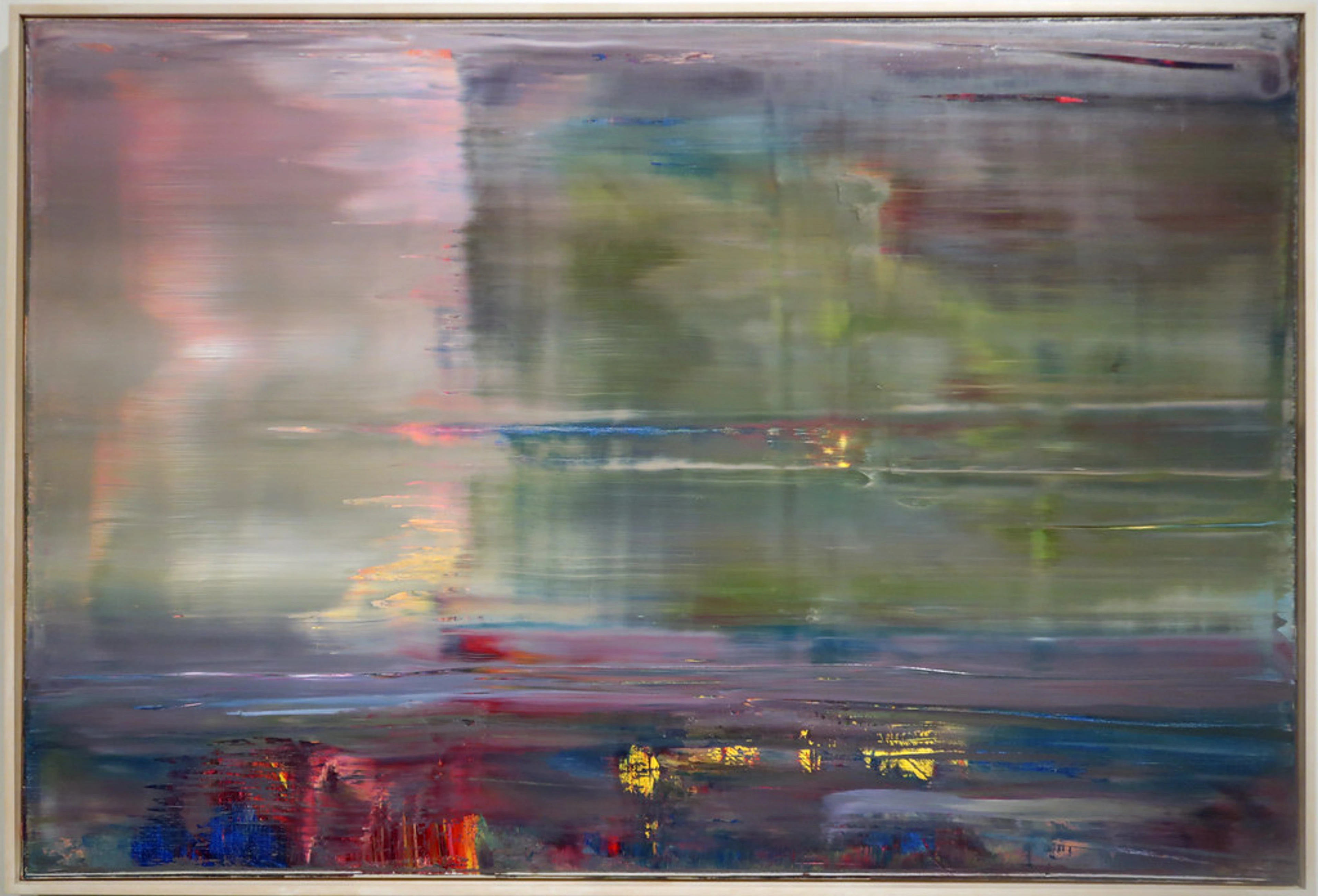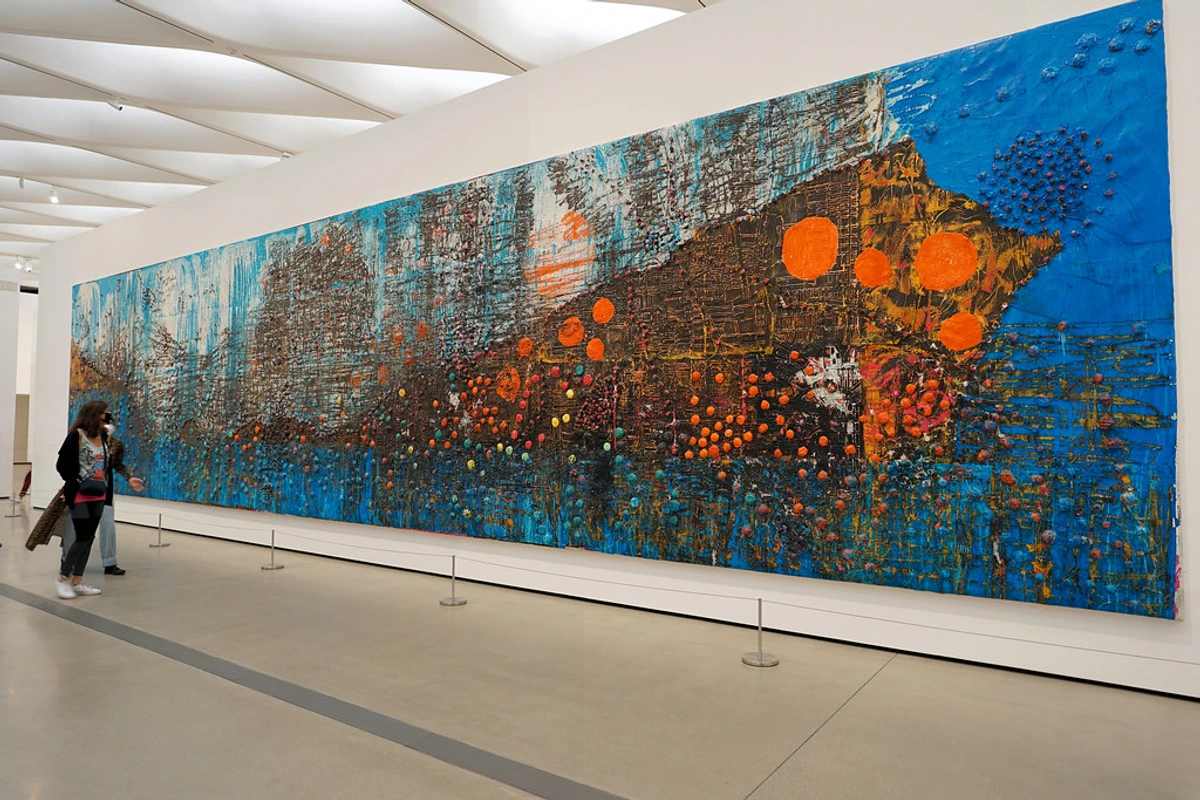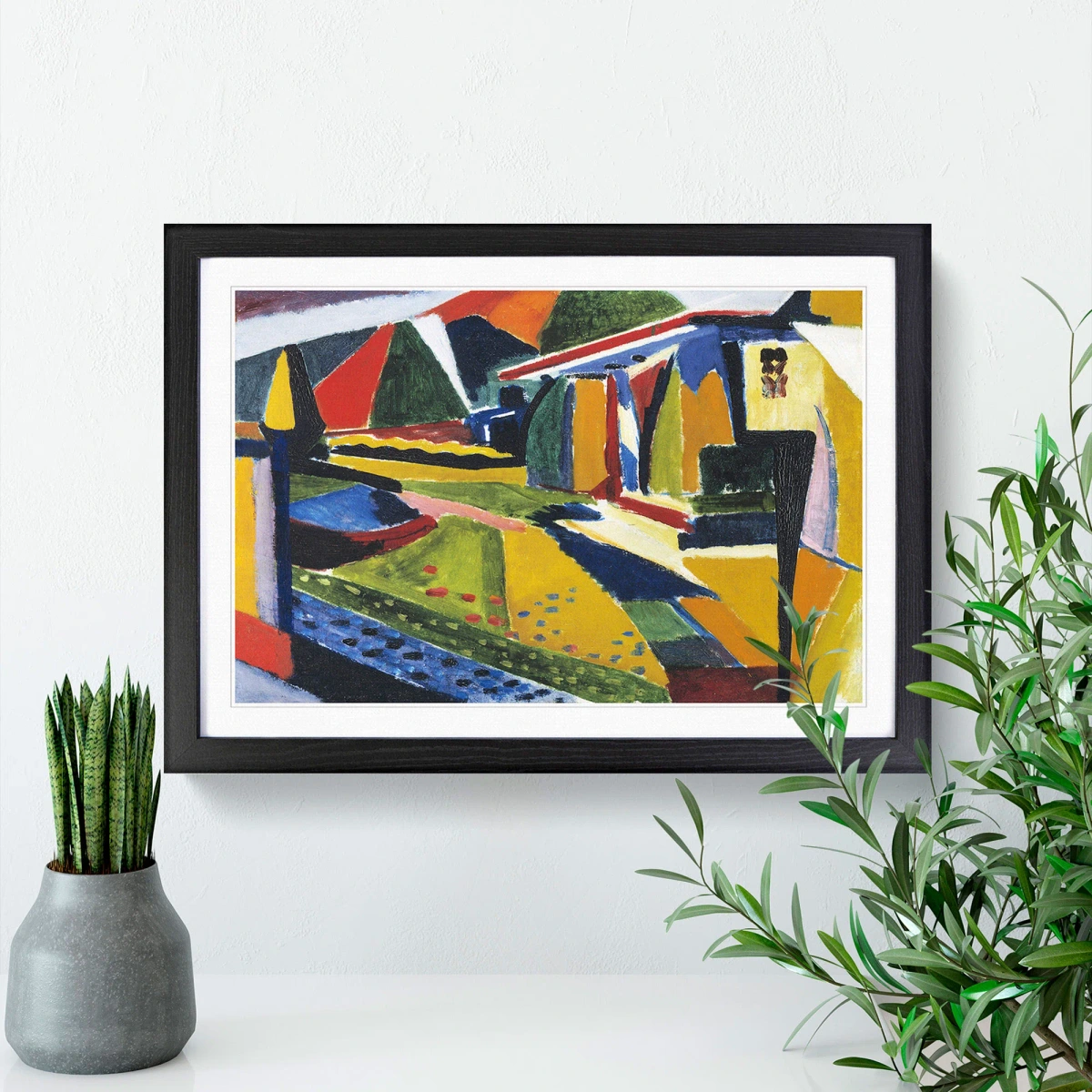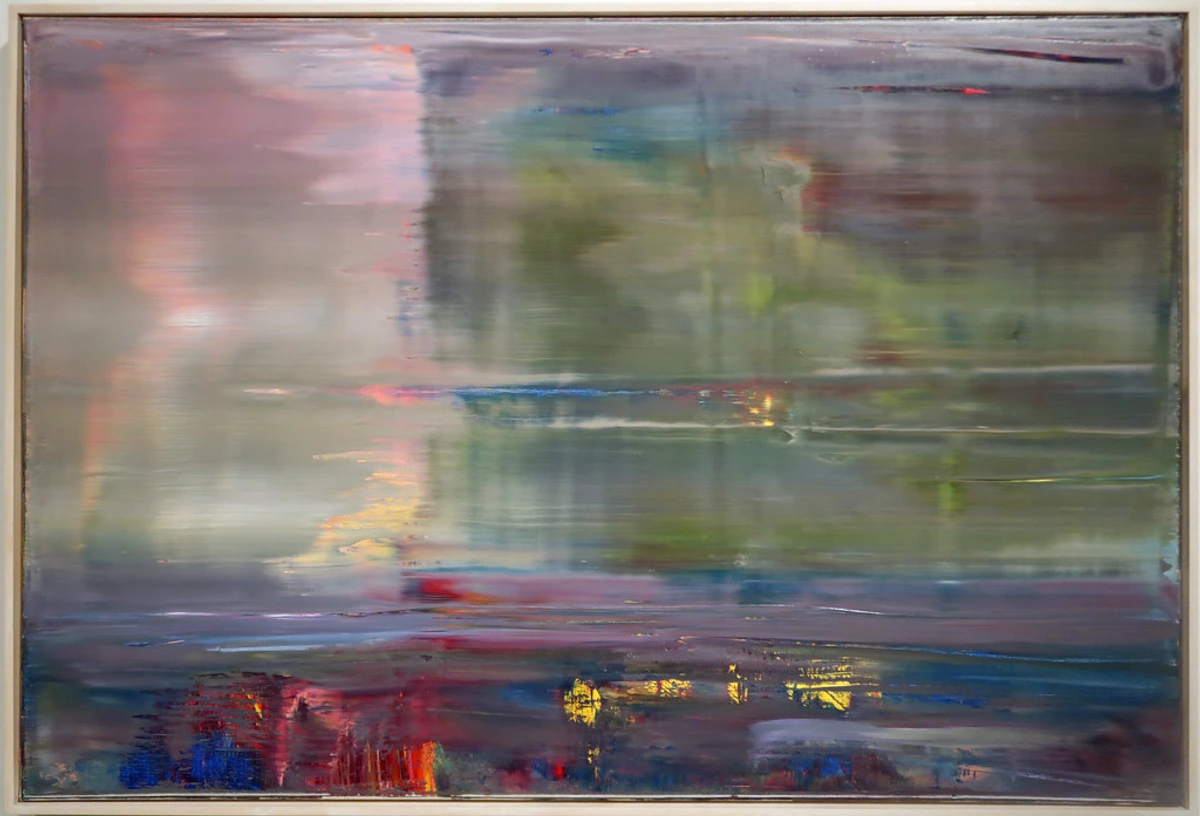
Ask the Artist: Your Guide to Buying Abstract Art
An artist's personal guide to buying abstract art. Discover essential questions to ask, decode intentions, connect deeply with artwork, and find pieces that truly resonate.
The Canvas Speaks: What I Wish You'd Ask Before Buying My Abstract Art
You know, one of the most common things I hear when someone looks at an abstract painting, especially one of mine, is 'Hmm, interesting.' And sometimes, that's followed by a subtle squint, like they're trying to find a hidden landscape in a sea of splatters. Or, perhaps, 'That would look great over my sofa!' Which, honestly, is fine! I'm happy for my art to find a home and bring joy. But sometimes, just sometimes, I wish there was a deeper conversation. My work, for example, often explores vibrant color palettes and dynamic textures, aiming to capture a sense of energetic introspection – a dance between my inner landscape and the external world's rhythm, frozen in time. And every piece is a journey.
Because here's the thing: every canvas, every stroke, every decision – or beautiful accident, like when a spill turns into the perfect highlight, which I then decide to embrace and integrate – has a story. It's not always a narrative you can read like a book, but it’s a feeling, a journey, a moment frozen in time. And as an artist, there's nothing I love more than sharing a glimpse into that world, especially when someone is considering bringing a piece of it into their own space. So, if you're out there, browsing galleries, or perhaps even looking at some of my art for sale, and you find yourself drawn to a piece but feel a little lost, consider this your personal, slightly quirky, guide from an artist's perspective. Think of it less as an interrogation, and more as a first date with a potential new, vibrant member of your household. Trust me, the art will thank you for it.
Why Asking Matters: Unlocking the Heartbeat of Abstract Art and Your Connection to It
Let's be honest, buying art can feel a bit intimidating, right? Especially abstract art, which often deliberately avoids direct representation. It's not like buying a landscape where you can point to the mountain and say, 'Ah, a mountain!' With abstraction, it's more about feeling, about vibration – that energetic interplay of colors and forms – about the unseen. This shift from literal representation to an emphasis on emotion and form marked a profound change in art history. Movements like Abstract Expressionism and Minimalism emerged partly as a direct response to photography's ability to perfectly capture reality, freeing artists to explore pure expression and inner worlds, inviting viewers to engage not with 'what it is,' but 'how it feels' or 'what it evokes.' Asking the right questions helps bridge this historical shift, connecting you directly to the artist's intent and journey.
But that's also where its incredible power lies. Abstract art offers a unique opportunity for finding your reflection: how abstract art can be a mirror to your inner world. It doesn't tell you what to see; it asks you how you feel. To truly find your reflection, ask yourself: What emotions does this artwork stir within me? Does its movement or stillness resonate with my own internal state? What memories or sensations surface as I gaze upon it? And when you ask an artist about their work, you're not just getting facts; you're getting a slice of their soul, a peek behind the curtain of creation. You're learning to decode abstraction: a beginner's guide to understanding non-representational art.

https://live.staticflickr.com/65535/53064827119_1b7c27cd96_b.jpg, https://creativecommons.org/licenses/by-nc-nd/2.0/
My Core Questions for You, the Curious Collector
If I were a seasoned art collector (which, let's be real, I'm mostly just a messy artist with paint on my trousers, sometimes even on my forehead), these are the questions I'd be itching to ask another artist. They're designed to peel back the layers, not just of paint, but of intention and inspiration. To help you navigate these conversations, I've distilled the most impactful questions into four key areas:
Question | Purpose | Key Takeaway |
|---|---|---|
| What was the initial spark or emotion behind this piece? | Connects you to the raw genesis and emotional journey. | Understand the underlying feeling, not a literal story. |
| Can you tell me a bit about your process for this specific work? | Reveals the 'how' – the physical journey of paint, tools, and decisions. | Appreciate the artist's engagement and the artwork's 'life.' |
| How do you feel about this piece now, having finished it? | Offers a glimpse into the artist's evolving connection to their work. | Understand the artist's ongoing relationship and artistic growth. |
| What do you hope a collector takes away from it, if anything? | Explores the artist's subtle intention, opening a dialogue. | It's about resonance, not prescription; space for your interpretation. |
- "What was the initial spark or emotion behind this piece?"
- This is my absolute favorite question. It's like asking someone about their first crush. You get to hear about the raw, unfiltered feeling that started it all. Was it a feeling of chaos, a burst of joy, a quiet contemplation? For me, often it's a specific internal rhythm or a color combination that just screamed at me. For instance, in a recent piece, the spark was watching the way late afternoon sunlight fractured through my studio window, creating fleeting, almost magical patterns of light and shadow on my workspace. Understanding the emotional genesis helps you connect on a deeper, more visceral level. It helps you begin decoding abstract art: a guide to finding meaning in non-representational works for yourself.
- Sometimes, the answer might surprise you. A seemingly calm piece might have been born from intense frustration, or a wildly energetic one from a moment of profound peace. It's all part of the emotional language of color in abstract art. What initial spark do you think might have ignited this piece?
- "Can you tell me a bit about your process for this specific work?"
- Oh, the glorious mess! This question is gold for understanding the how. Did I layer paint for weeks, letting each dry before adding the next, like building up a geological stratum? Or was it a frantic, intuitive burst, a dance of intuition and intent: my process in creating abstract layers? Did I scrape, pour, splat, or meticulously place each brushstroke? Knowing the physical journey of the paint on the canvas reveals so much about the artist's engagement and the life of the artwork. It also gives you insight into the role of texture in abstract art: a sensory exploration.
- I once had a piece where the initial layer was a complete disaster – I mean, complete. I almost threw it out. But then, something shifted, and I started adding layers, each one trying to 'fix' the previous, until it became something entirely new and beautiful. That struggle, that persistence, became part of its story. So don't be afraid to ask about the struggle as much as the triumph! Can you envision the artist's hands at work, shaping this piece?
- "How do you feel about this piece now, having finished it?"
- This is a deeply personal one, and not everyone might ask it, but it's fascinating. Does the artist still love it? Are they surprised by it? Do they see something new every time they look? Our relationship with our own creations evolves. Sometimes, I finish a piece and think, 'Right, next!' Others, I'll stare at for days, almost reluctant to let them go, as if a part of me remains tethered to its story. It gives you a sense of the artist's ongoing connection to their work, a glimpse into their very unique artistic style and growth. What new perspective might the artist share about this completed work?
- "What do you hope a collector takes away from it, if anything?"
- Now, an artist will rarely dictate meaning. That's the beauty of abstract art – it leaves space for your interpretation. But they might share their intention. Do they hope it brings a sense of calm? A burst of energy? A moment of reflection? It's not about being prescriptive, but about opening a dialogue between the art, the artist, and the viewer. It's part of the emotional connection: why collecting abstract art is a personal journey. How might this piece resonate with your own experience?

https://live.staticflickr.com/65535/52756888197_ece375ce5f_b.jpg, https://creativecommons.org/licenses/by-nc-nd/2.0/
Beyond the Deep Dive: Practical Ponderings and Visual Cues
Okay, so you've had your soul-to-soul chat. Now for the slightly more mundane, but equally important, questions for bringing a piece into your life.
- "What materials did you use, and how should I care for it?"
- This is crucial for the longevity of your investment. Is it acrylic, oil, or mixed media? Is it on canvas, wood panel, or paper? Knowing this impacts how to buy art and how you should display it. For example, some pigments fade in direct sunlight, or certain textures might be fragile. Furthermore, asking about archival quality ensures the artwork is made with materials designed to last, impacting its long-term preservation and potential value for future generations. While acrylics are generally more forgiving, oils require more specific care and curing time. I'll always be upfront about my materials and how to keep them looking their best. It's part of responsible art ownership, and a good artist will appreciate your concern.
- "Is this part of a series, or does it relate to other works you've done?"
- Sometimes, a single painting is a universe unto itself. Other times, it's a chapter in a much larger book. Knowing if a piece belongs to a series, or if it represents a particular phase in an artist's timeline, can add layers of appreciation. You might discover a whole lineage of artistic exploration, seeing the evolution of abstract art: key movements and their collectible value unfold in their personal journey.
- "What considerations should I keep in mind for displaying this piece in my space?"
- While the initial thought might be "it would look great over my sofa," a deeper question delves into the artwork's physical presence and scale. An artist often creates with a certain environment in mind, even if abstract. Does the artist have recommendations for lighting (e.g., direct spotlights vs. ambient light), wall color, or even the optimal distance from which the piece is best viewed to appreciate its details or overall impact? This helps you visualize how the abstract art interacts with your interior design, creating flow and feeling, as explored in abstract art for every room.
What to Look For: Deciphering Abstract Art Beyond the Conversation
Even without asking a single question, your eyes can tell you a lot. Learning to observe the visual elements of abstract art can deepen your appreciation and help you identify a "good" piece—which, in abstraction, is less about realism and more about impact. Pay attention to:
- Composition & Balance: Observe how the visual weight of elements is distributed. Does the artwork feel balanced, or intentionally off-kilter? Are shapes, lines, and colors interacting in a way that feels harmonious or creates intriguing tension?
- Rhythm & Movement: Notice how your eye moves across the canvas. Are there repeating elements, implied lines, or a dynamic arrangement that creates a sense of flow, energy, or quiet stillness?
- Focal Points: Even in abstract art, there might be areas that naturally draw your attention. How do these points interact with the rest of the piece? What holds your gaze?
- Color Harmony & Contrast: Feel how the colors play off each other. Do they create a sense of calm (perhaps like the psychology of blue in abstract art) or vibrant energy? Is there an effective and intentional use of contrast that enhances the impact?
- Texture & Surface: Consider how the texture contributes to the overall feeling. Is it smooth, rough, layered? Does it invite you to imagine touching the canvas? (Again, consider the role of texture in abstract art).
- Artist's Signature or Markings: Is there a unique mark or signature? While not always present on the front, its style can sometimes reveal an artist's personality or period of work.
A "good" abstract painting is one that continues to engage you, surprise you, and enrich your space over time. It’s about impact, composition, and authenticity.

https://www.wayfair.co.uk/home-decor/pdp/east-urban-home-home-garden-vol1-by-henry-lyman-sayen-picture-frame-painting-euee2612.html, https://creativecommons.org/publicdomain/zero/1.0/
Working with Galleries and Art Consultants
When you're exploring art through a gallery or with an art consultant, these questions are still immensely valuable. While they might not be the artist themselves, good gallerists and consultants are often deeply knowledgeable about the artists they represent. Don't hesitate to ask them these same questions. They can often provide insights into the artist's larger body of work, their philosophy, and even specific anecdotes about the creation of a piece, serving as a knowledgeable intermediary.
The 'Red Flag' Questions (And How to Dodge Them!)
Now, a quick word from your friendly neighborhood artist on what not to ask, or rather, questions that might suggest you're not quite ready for that deep art dive. (No judgment, just a gentle nudge!)
- "What is it supposed to be?"
- Oh, this one. It's a classic! But remember, with abstract art, it's not 'supposed to be' anything literal. It doesn't depict a specific object or scene for you to identify. Instead, it is an experience, a visual event, and its meaning unfolds through your personal interaction with its forms, colors, and textures. This non-representational quality is precisely what defines abstract art, inviting subjective engagement rather than objective identification. Better to ask, 'What was your intention with the shapes/colors/textures?' or 'What feeling were you exploring?'
- "Can you make one just like this, but bigger/smaller/in blue?"
- While I appreciate the compliment (that you like this one!), asking an artist to replicate an abstract piece exactly is like asking them to relive a dream precisely. It's often impossible, and frankly, a bit soul-crushing – not because I don't want to please, but because each abstract piece is a unique journey, an unrepeatable moment in time and creation. Its unique essence lies in its singular manifestation; attempting an exact copy would diminish its authenticity and the organic nature of its birth. I might create similar pieces in a series, but never an exact replica. Think of it as a unique moment in my timeline.

https://live.staticflickr.com/65535/51907566658_1100dbeb2a_b.jpg, https://creativecommons.org/licenses/by-nc-sa/2.0/
Finding Your Collector's Eye: Cultivating Your Taste
Beyond the questions you ask the artist, a significant part of buying abstract art is cultivating your own eye and understanding what genuinely resonates with you. It's a journey of self-discovery through art.
- Visit, See, Experience: Immerse yourself in art. Visit local galleries, museums, and art fairs. Don't just glance; spend time with pieces that draw you in, even if you don't immediately 'get' them. How do they make you feel? What visual elements keep your attention?
- Explore Online, But See In Person: Online platforms are fantastic for discovery (like my art for sale section!), but nothing beats seeing a physical piece. Scale, texture, and the true vibrancy of colors can only be fully appreciated in person.
- Trust Your Gut (Again!): The 'right' piece isn't necessarily the most expensive or the one everyone else likes. It's the one that speaks to you, that feels like an extension of your inner world or enhances your living space. Consider guides like building an abstract art collection: a beginner's guide or curating your first abstract art collection: a step-by-step guide for structured advice.
Common Collector Pitfalls to Avoid
As you embark on your collecting journey, it's worth being mindful of a few common missteps that can diminish the joy of art ownership:
- Buying Solely on Trends: Trends come and go. While it's great to be contemporary, ensure your purchase is something you'll love beyond the current moment. True art endures.
- Ignoring Scale and Space: An abstract piece needs room to breathe. Don't fall in love with a monumental canvas if you only have a small wall. Conversely, a tiny piece might get lost in a grand setting. Visualizing how it fits into your home, as discussed in abstract art for every room, is key.
- Impulse Buying Without Research: While an emotional connection is vital, a quick check on the artist's background, exhibition history, or the piece's provenance can prevent future regrets. This is particularly relevant if you're considering how to buy art as an investment.
Trust Your Gut (And Maybe Visit My Museum!)
Ultimately, buying abstract art is a deeply personal journey. The 'right' piece is the one that speaks to you, that resonates with something inside. The questions above are merely tools to help you deepen that connection, to pull back the veil and truly appreciate the 'story behind the canvas'.
Don't be afraid to sit with a piece, to let it breathe, to see how it makes you feel over time. If you're ever in the Netherlands, you could even visit my museum in 's-Hertogenbosch and see some of my larger works in person, feeling their powerful presence. Or, explore my art for sale online to discover pieces that might just call out to you.
Remember, art enriches life. It challenges, it comforts, it inspires. And when you understand a little more about its genesis and its visual language, that enrichment grows exponentially. Happy collecting!
Frequently Asked Questions About Buying Abstract Art
- Do I need to understand abstract art to buy it?
- No, not necessarily! While understanding the artist's intent or the historical context (like the evolution of abstract art: key movements and their collectible value) can deepen your appreciation, the most important thing is that the piece resonates with you. If you feel a connection, that's enough. The questions we've discussed just help you explore that connection further.
- Is it rude to ask an artist about their prices?
- Not at all! It's perfectly normal and expected. Most artists are happy to discuss pricing openly and transparently. It's a transaction, after all, and whether you're starting an art collection on a budget or otherwise, you need to know the cost.
- How can I authenticate abstract art or understand its provenance?
- For established artists, look for a certificate of authenticity (COA) directly from the artist or gallery. Provenance refers to the history of ownership, which can add to an artwork's value and credibility. Don't hesitate to ask the artist or gallery about the artwork's history, previous exhibitions, or any documentation available. This is especially important for how to buy art as an investment.




